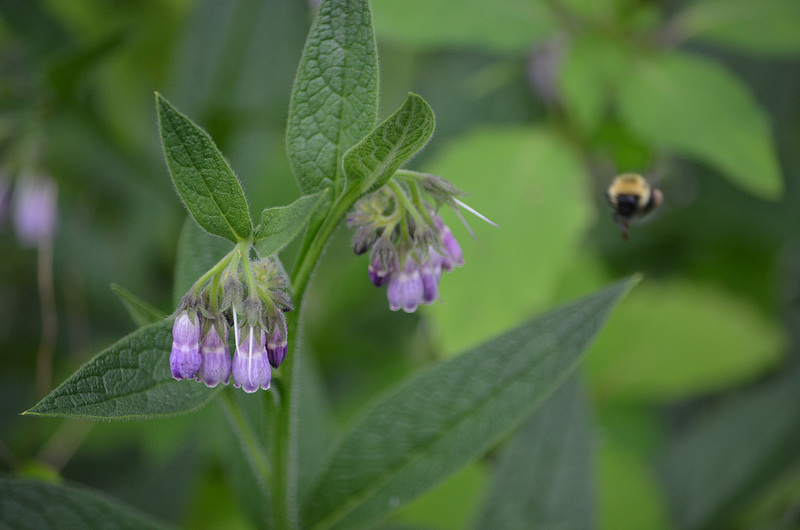|
Comfrey is probably one of the most talked about plants in permaculture plant forums, and it’s no wonder! This prolific plant is stout, easy to propagate and very useful. This little dandy is sometimes called knit-bone, because it is commonly used as a poultice to help heal broken bones. How cool is that!
In fact, since so much has been said, I won’t say too much my self, but I would like to point you to a couple of awesome resources on the matter! First, there’s Paul Wheaton’s video, “Why Permaculture Folks Love Comfrey.” It’s a 10 minute video, where some permaculture experts talk about the awesomeness of this beneficial plant! Toby Hemenway, author of “Gaia’s Garden,” even calls comfrey the King of Permaculture! If you are even a little bit curious, about comfrey, I would check it out. Secondly, I’m going to point you to the Plants For A Future Database (PFAF). They are a non-profit, research organization dedicated to researching and providing information on ecologically sustainable horticulture. They have been compiling a database for more than a decade. That database currently has more than 7,000 different species of plants. THEY ARE AWESOME!!!! PFAF lists 5 different species of Comfrey, edible, medicinal, and other uses for the plant, growing conditions, propagation techniques and more. Here are some highlights from the PFAF entry on Symphytum officinale, or common comfrey:
For more on this highly beneficial plant, including toxicity information, check out the database at www.pfaf.org. We’ll see you soon with another awesome Plant Profile from Haven Homestead!
11 Comments
Corvus
4/8/2015 05:32:34 pm
Link don't work
Reply
Cat
9/11/2015 01:40:32 pm
Reply
paganbotanist
5/20/2015 07:42:17 am
common comfrey is also invasive and very hard to get rid of once it's got its roots down! Think before you plant.... it's gonna be there forever Although I am engaging in a war of attrition with a few over-enthusiastic clumps on the allotment: cut -& use to mulch or feed other plants- every time it gets bigger than a foot or so high, I'll just have to see if it works but I expect it to take several years!
Reply
antbrother
5/22/2015 07:38:12 am
Yes, it is invasive, so be careful where you plant. I'm also dealing with blackberries and mint. For these type of plants, like comfrey, give themail some room, keep them in a pot, or pot them up and bury. They will still run...
Reply
antbrother
5/22/2015 07:34:11 am
It is also considered a dynamic accumulator in Permaculture as it's deep tap root mines minerals and brings them to the top. Green mulching the leaves adds this back into the topsoil. It can also be used for animal forage.
Reply
Hugh Duranty
7/23/2015 10:55:05 pm
Where can we get seed here in kznMidlands. Regardss
Reply
I'm sorry that I don't know where you can get seed, but if you know someone who has some, you can divide it by digging up a piece of the plant, roots and all. Since it is so hardy, you can do that at any time of the year in just about any weather and it will survive. (probably not mid winter though!)
Reply
Seraphina
2/12/2017 08:50:30 pm
It is my understanding that the leaf can be used internally, but the root is for topical only.
Reply
Lindsay
2/12/2017 09:17:04 pm
Thank you Seraphina. I am glad you commented on that. That could be really useful to know.
Reply
Leave a Reply. |
Lindsay Hodge
Lindsay Hodge is our resident Writer here at Haven Homestead. She keeps this blog, a GRIT blog, and writes other fun things too. Categories
All
Archives
May 2018
|



 RSS Feed
RSS Feed
